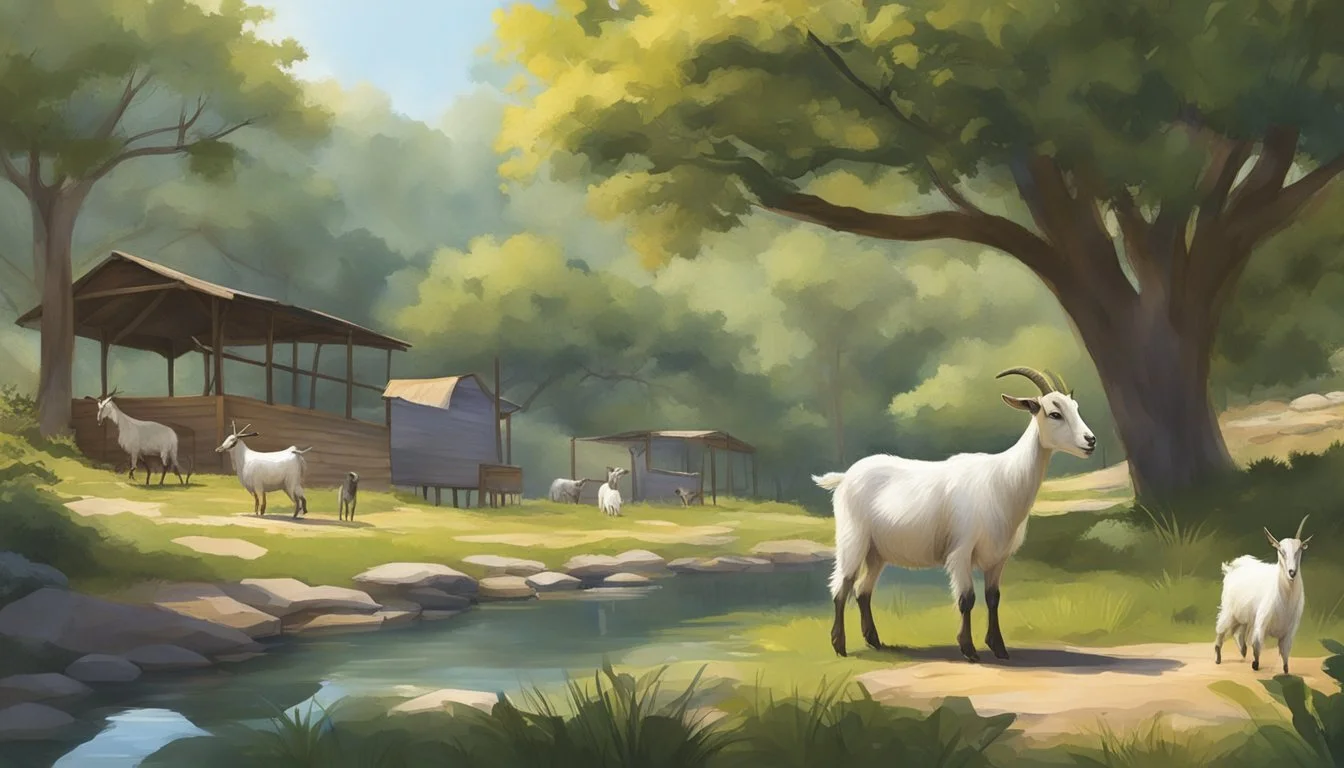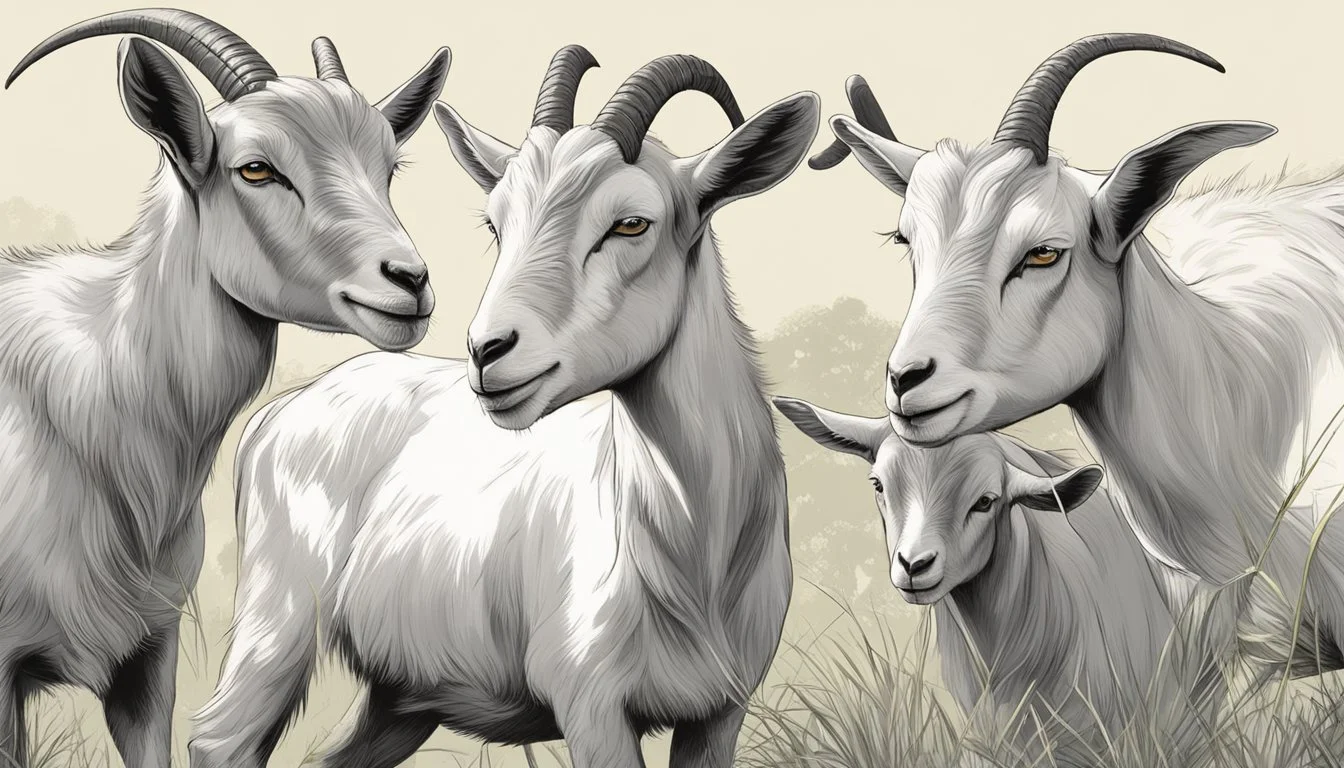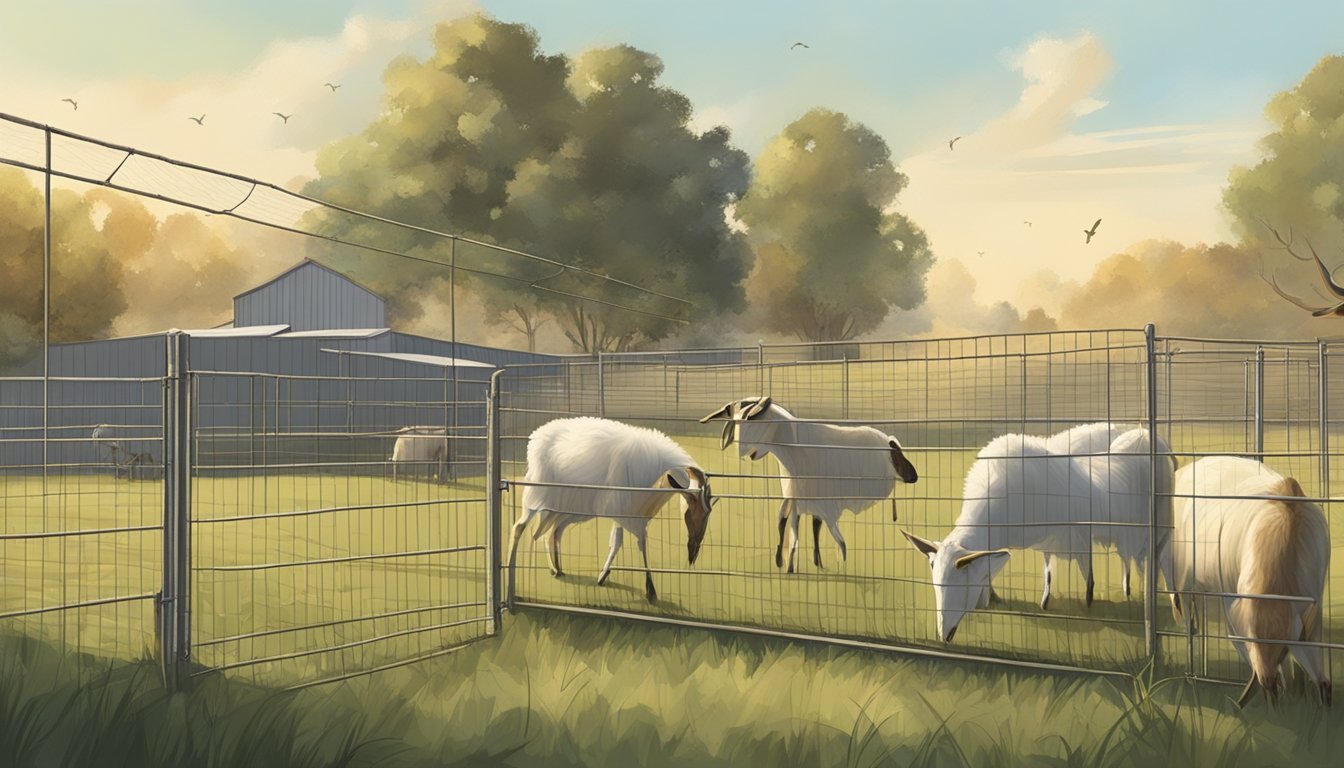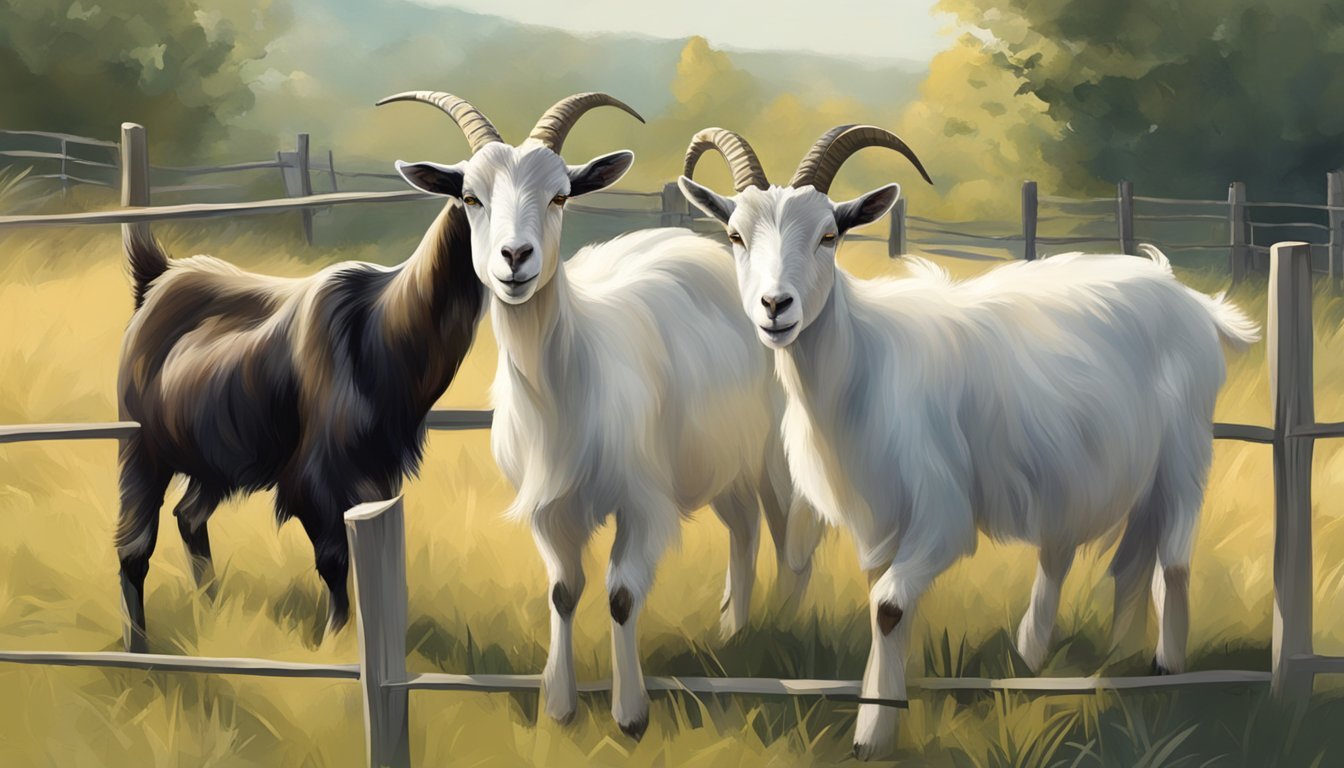What Is the Best Way to Socialize Goats?
Essential Tips for Goat Owners
Socializing goats is an integral part of ensuring their welfare and happiness. A well-socialized goat is typically more manageable, cooperative, and can integrate better into the herd. Socialization of goats begins from a young age, where interaction with humans and other animals play a crucial role in their development. Touch, gentle handling, and calm communication are foundational in creating a positive human-goat relationship. By being hands-on from day one, a caretaker can foster trust and ease the process of managing daily chores and veterinary care.
Establishing a routine for goats that includes regular and positive human contact can significantly aid in their social development. By spending time with the goats, the animals learn to associate humans with good experiences, which can be as simple as feeding, grooming, or even playful interaction. This practice promotes a sense of security among goats when they are approached, making routine tasks like milking, hoof trimming, and transporting less stressful for the animal.
Moreover, providing goats with a structured environment, where they can indulge in natural behaviors and establish a social hierarchy, is essential for their overall well-being. Introducing socialization activities at an early age can prevent the development of unwanted behaviors. Training goats to walk on a lead or to respond to basic commands can be highly beneficial for remaining in control in various situations. A well-adapted goat reflects not only on its own quality of life but also enhances the ease and efficiency of handling by the owner or caretaker.
Understanding Goat Behavior
To effectively socialize goats, understanding their behavior is crucial. This section breaks down the dynamics of goat hierarchy, communication methods, and their response to stress, which are all pivotal in fostering their well-being and socialization.
Social Hierarchy in Goats
Goats establish a clear social hierarchy within the herd, where dominant goats assert their position through various displays, often including physical actions such as pushing or head-butting. Subordinate animals recognize these dominants, typically deferring to them, which maintains order and reduces conflict.
Goat Communication and Bonding
Communication in goats involves a combination of vocalizations, body language, and scent cues. They bond by grooming and spending time in close proximity with one another. Bonding is essential as it encourages trust and facilitates harmony within the herd.
Stress and Well-Being
A goat's stress can be minimized through understanding and respecting their social needs. Providing an environment that allows for natural movement and adequate space can significantly reduce stress levels, crucial for their overall well-being.
Importance of Socialization
As inherently social animals, goats require interaction not just with humans but also with their kind to thrive. Socialization helps develop appropriate behaviors, ensuring goats are well-adjusted and less likely to act out aggressively.
Goat Breeds and Social Traits
Different goat breeds may exhibit unique social characteristics. However, social hierarchy and the need for companionship are universal traits across all breeds. Recognizing breed-specific tendencies can aid in socializing them more effectively.
Recognizing Signs of Territoriality
During periods such as the rut, goats can become more territorial. Recognizing signs of increased aggression and territorial behavior allows for proactive management to ensure safety and harmony within the herd.
Interspecies Interaction
Goats can also interact positively with other species. While they have distinct social structures compared to sheep, cows, or chickens, with careful introduction and monitoring, goats can cohabit peacefully with other farm animals, enriching their social environment.
Creating a Conducive Environment
To socialize goats effectively, their environment should be well-structured, providing a blend of comfort, entertainment, and natural social dynamics. This will cater to their innate needs for shelter, play, and foraging.
Appropriate Shelter and Space
Goats require a shelter that protects them from the elements, ensuring they have a dry, clean space to rest. A functional shelter should also be well-ventilated and spacious enough to accommodate the herd without overcrowding. Overcrowding can cause stress and instigate conflict within the herd's hierarchy.
Enrichment Through Climbing Structures
Climbing is a natural and favorite pastime for goats, aiding their physical health and providing mental stimulation. Installing climbing structures and platforms allows them to satisfy this instinct. These should vary in height and difficulty to cater to goats at different ranks and skill levels within the social structure.
Partitioning for Privacy
Partitions within the goat's living space give them the chance to have private moments away from the herd. These separated areas can help reduce tension and allow lower-ranking goats to escape any unwanted attention, thus maintaining a harmonious environment.
Access to Forage and Vegetation
A diet rich in variety is integral for goats' health, so providing access to a range of forage and vegetation is necessary for a well-rounded feeding regimen. Natural vegetation encourages them to browse as they would in the wild, which is beneficial for both their physical and mental well-being.
Effective Socialization Techniques
To socialize goats effectively, focus on building trust and establishing a strong bond within the herd through frequent, gentle interactions and structured activities that encourage natural behaviors.
Introduction to Herd
Introducing a new goat to the herd should be done gradually to allow it to understand the hierarchy and find its place. Initial separation followed by supervised mingling can reduce stress and promote a smoother integration.
Feeding and Foraging Together
Feeding is an opportune time to foster social bonds. Goats should be fed together to encourage a communal dining experience, reinforcing herd dynamics. Utilizing methods that mimic natural foraging can contribute to a balanced diet and satisfy their innate foraging instincts.
Group Play and Exercise
Group activities are essential for socialization. Play and exercise not only facilitate bonding but also promote physical health. Inclusion of activities such as climbing and jumping supports their playful nature and movement needs.
Routine Care and Interaction
Consistent routine care—such as grooming, hoof trimming, and vaccinations—when paired with positive interactions, builds trust. It is important for caregivers to provide attention and care in a way that respects the goat's comfort and space.
Use of Elevated Platforms and Structures
Goats have an inherent desire to climb. Incorporating platforms and structures within their environment encourages exploration and stimulates their natural behavior, while also enhancing their physical abilities and confidence.
Handling and Bottle Feeding
For young goats or those requiring additional care, bottle feeding is an effective way to establish trust and ensure proper nutrition. Gentle handling during feeding strengthens the caretaker-animal bond and can lead to a more social adult goat.
Managing Breeding and Kidding
Breeding and kidding are critical times that require extra care and attention to maintain trust and socialization. Managing these periods with sensitivity can prevent undue stress and promote maternal bonding, ultimately influencing the social structure of the herd.
Integrating Other Farm Animals
When socializing goats with other farm animals, it's essential to understand the dynamics between species, weigh the advantages and disadvantages of mixed herds, and manage the establishment of a balanced hierarchy.
Understanding Inter-Species Dynamics
Different farm animals interact based on their inherent behaviors and the roles they may assume within a group. Goats are naturally curious and can often be found forming companionships with cows, which can be beneficial as they often do not compete for the same food resources. Chickens and sheep might also share an environment with goats, but careful observation is crucial to ensure harmonious relations.
Pros and Cons of Mixed Herds
Pros:
Resource Efficiency: Mixed herds can optimize pasture usage since goats tend to browse while cows and sheep primarily graze.
Health Benefits: Due to differing parasite loads amongst species, there is a reduced chance of parasite transfer; goats can benefit from the presence of cows breaking the parasite lifecycle.
Cons:
Competition for Food: Although less common with cows, situations can arise where food competition occurs, stressing animals and requiring additional management.
Disease Transmission: Certain diseases may spread between species if not monitored and managed correctly.
Creating a Balanced Hierarchy
Even among mixed species, a social hierarchy will form, which includes dominants and subordinates. Introducing goats into a mixed-species environment requires supervision to ensure that a stable and balanced hierarchy is established, promoting overall animal welfare. Signs of distress or aggressive behavior should be addressed quickly to prevent harm and facilitate positive bonding among the farm animals.
By respecting the unique behaviors and needs of each species, farmers can create a thriving, integrated farm environment where all animals, including goats, contribute to a cohesive and productive system.
Monitoring and Maintaining Social Health
Effective socialization is crucial for a goat's well-being. Monitoring their behavior within the herd and ensuring appropriate care are essential steps in maintaining their social health.
Observation of Herd Behavior
Regular observation of herd behavior is pivotal for identifying social structures and any signs of stress. Watch for changes in interactions, such as bullying or isolation, which can indicate disturbances in the herd's hierarchy. Such behavior can affect a goat's welfare, and early detection allows for timely intervention.
Health Checks and Veterinary Care
Continuous health checks ensure that physical ailments do not unduly influence social dynamics or cause unnecessary distress. Regular veterinary care, including vaccination and prevention of communicable diseases, maintains the herd's overall health, minimizing potential disruptions to socialization.
Adjustments to Social Arrangements
If disruptions in social harmony occur, adjustments may be necessary. Altering the environment or group compositions can help in establishing a more stable social hierarchy. Interventions should be deliberate and based on thorough observation to foster positive social behavior and enhance welfare.
Challenges and Solutions in Socializing Goats
In socializing goats, caregivers face the delicate balance of managing herd dynamics while ensuring each animal's well-being. From aggression to environmental factors and varying personalities, strategic approaches are required to facilitate harmonious interactions.
Dealing with Aggression and Bullying
Aggression and bullying within a goat herd often reflect the natural hierarchy where dominants assert their status. To mitigate stress, one can provide ample resources such as food stations and minimize competition. Interventions like separating bullies and introducing new goats gradually, in controlled environments, can help prevent aggressive outbreaks. Establishing a routine where goats feel secure and know what to expect reduces their stress levels and curbs bullying behaviors.
Overcoming Environmental Constraints
The environment plays a crucial role in goat socialization. Cramped spaces elevate tension, leading to conflicts. Ensuring enough space and shelter can effectively reduce these issues. In areas with constraints, environmental enrichment—like climbing structures and toys—diverts attention and encourages positive behaviors. Allowing goats to explore different stimuli in their environment can improve their social interactions and behavior.
Adapting to Different Goat Personalities
Like humans, goats have diverse personalities; some may be timid while others are more assertive. Understanding individual behavioral cues enables one to tailor socialization strategies, such as providing secluded areas for subordinates to retreat. Pairing goats with complementary temperaments can encourage mutual trust and ease social mingling. Consistent, calm attention from caregivers builds trust and helps integrate different personalities into the herd smoothly.
By tackling these challenges with informed solutions, one can create a cohesive and stress-reduced environment that supports the social health of a goat herd.
Conclusion
To ensure the welfare of goats, socialization is key. It is essential for them to develop the right behavior traits and interact well in their environment. There are best practices to adopt for effective socialization.
Start Early: Integrating young goats into social groups helps them learn from other goats.
Consistent Interaction: Regular, gentle handling by humans cultivates trust and eases management activities such as milking or veterinary care.
Enriched Environment: A stimulating environment with structures for climbing and toys can prevent boredom and encourage positive behaviors.
Positive Reinforcement: Reward-based training promotes good behavior, as goats respond well to positive reinforcement.
Observation: Monitoring their interactions is crucial to detect any signs of aggression or stress early on.
In conclusion, a thoughtful and methodical approach to socializing goats contributes significantly to their overall well-being. By creating a conducive environment and employing patient, reward-based tactics, one can raise well-adjusted goats that thrive in their social structure. This not only impacts their physical health positively but also their mental well-being.








